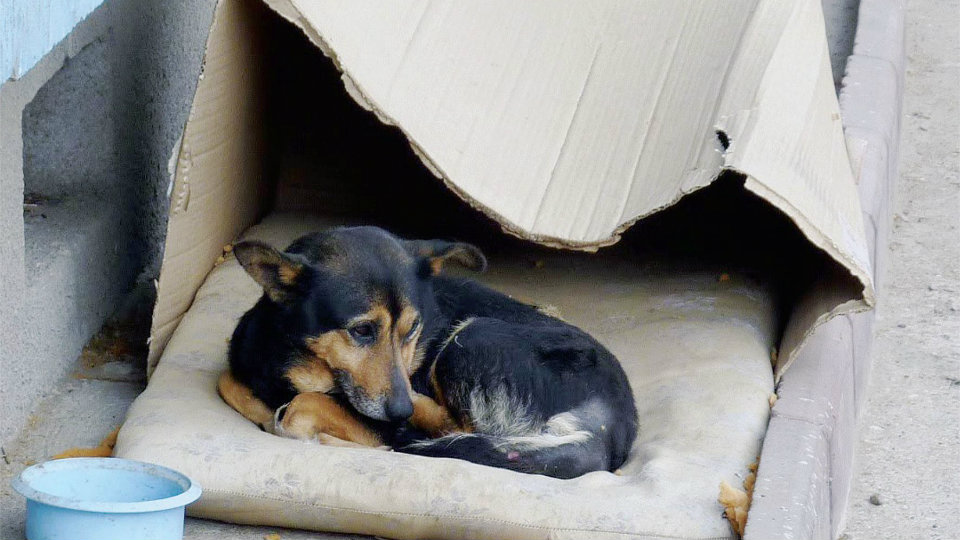By Maneka Gandhi
In this week’s Pet Talk, Maneka tells what can be done to ensure the well-being of stray dogs in winters?
What are the ways in which we can provide first aid to birds injured due to kite strings?
Kite flying injures and kills thousands of birds. If you find an injured bird, it is best to hold the bird with two hands. Once caught, the bird should be examined quickly and should be placed in a well ventilated box. Different kinds of injury require different treatment.
Broken blood feather: They are relatively easy to treat. At home, pack the broken shaft with styptic powder or flour. Apply minimal pressure with a gauze pad while traveling to the veterinarian; Bleeding toenail: Apply a styptic stick or powder to the toenail. Then, take the injured bird to a veterinarian; Injured leg or foot: In case of an injured leg or foot, styptic powder, corn flour or baking soda can be used to stop the bleeding. A mixture of alum and cold water can also be applied. Place a gauze pad over the wound and apply firm pressure. Also, use an antibiotic ointment and bandage; Broken wing bones: Cut the toe out of a sock and place the injured bird inside with its head through the hole. Ensure that the bird can breathe comfortably and there are holes for its feet, and take it to a veterinarian.
Can breeds like Siberian Huskies stay healthy in hot climatic conditions?
Exotic breeds, such as Siberian Huskies and Saint Bernards, are not suitable for hot climatic conditions. They are appropriate for cold climates and can withstand temperatures as cold as -51 degrees C. Huskies require constant exercise, which is impossible in hot weather. The heat causes chronic breathing and skin problems, tick fevers and dehydration.
How can we ensure the well-being of stray dogs in winters?
There are many stray dogs and cats living outside in our community, and for many the food and shelter that we provide during the winter will mean the difference between life and death. There are many ways in which we can help these animals in surviving the winter. Take them inside! — If you spot a homeless animal on the road, there is no point picking up a phone and simply calling a shelter or an NGO. They are already overloaded with sick animals. See if you can give those dogs a shelter in the verandah, staircase or garden, of your home. Most puppies are born in winter and 90% of them die of the cold.
If giving them shelter in your house is not an option, you might be able to help them survive the winter by providing them a home, near where you live, with a cardboard box, blankets or straw. See if you can make coats for them. Give stray animals fresh, clean food and water. Provide them with rich nutritional food such as rice, roti, dal, instead of milk and biscuits as it will keep them full. A well fed animal is able to fight off illness and infection.
What are the prominent symptoms of allergies in dogsa
Dogs can show allergic symptoms when their immune system recognises certain substances as dangerous. Dogs sometimes have extreme reaction to these allergens, which are very common in the environment. Allergens can cause problem when inhaled, swallowed or contact the dog’s skin. Certain noticeable symptoms of allergies in dogs are as follow: • Sneezing; • Runny, itchy eyes; • Coughing and wheezing; • Waxy discharge; redness and odour from ears; • Bald patches on the skin; • Discolouration of skin, inflammation; • Constant licking; • Swollen paws. Dogs can be allergic to dust, feathers, perfumes, fabrics, cleaning products, rubber and plastic materials, certain foods and plants.
What is the right age to sterilise a female puppy?
A spay surgery prevents dog from reproducing by removing both the ovaries and the uterus. A female dog can be sterilised any time after eight weeks of age, and preferably before her first heat for best health benefits. The first heat cycle occurs approximately around six months of age, varying from breed to breed. Spaying reduces risk of certain diseases, such as mammary gland cancer. Also, it helps in preventing over-population.
Can a fall in consumption of beef reduce the desertification around the world?
Desertification is a process of land-degradation by which a region becomes progressively drier and drier — eventually becoming desert. Desertification is the process by which productive land is transformed into wasteland.
Livestock grown for meat impact the environment more than any food we eat, mainly because they require more land, food, water, and energy than plants, to raise and transport. Producing a 120 gram hamburger, for example, requires 2 kg of grain and forage. Animals bred for meat are grazed in forests, destroying all the young trees and ultimately destroying the forest, which in turn causes the rains to lessen. Methane emitted by meat animals, like cattle, pigs and goats, creates far more heat in the atmosphere causing vegetation to dry up.
It takes water to grow crops for animals to eat and give animals water to drink. A single cow used for milk can drink up to 190 litres of water per day — or twice that amount in hot weather — and it takes 2,585 litres of water to produce just three litres of milk. When that water is taken out of the ground, it causes the land to dry up.
Can cows be affected by pneumonia?
Two types of pneumonia — viral and bacterial — affect bovines. The two pathogens often work in concert, with the virus striking first and the bacterial illness following. An animal stricken with pneumonia may die soon after exhibiting severe signs and symptoms, or recover but suffer from permanent lung damage. Such cattle can serve as a source of infection to others in the herd. Calves between the age of 1-5 months are most susceptible to pneumonia. Any bovine is susceptible to pneumonia, but calves are particularly vulnerable. Pneumonia is an emergency. Call the vet at the first sign of any respiratory illness, as early treatment offers the best prognosis. Prevention is even better — vaccinate your cows annually against some of the major causes of pneumonia.








Recent Comments